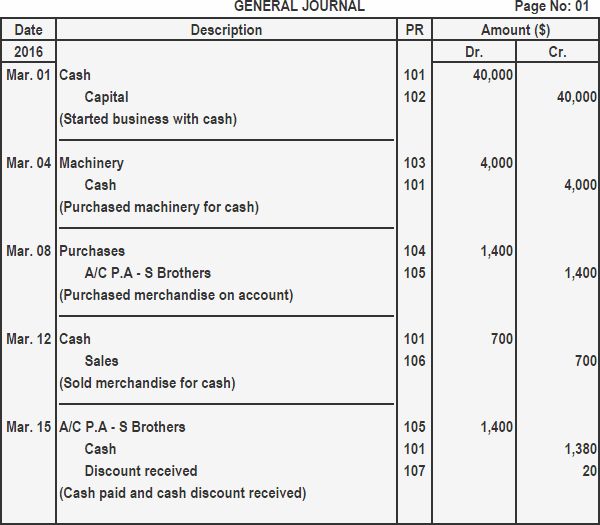LEDGER ENTRIES
Meaning of ledger entries:
Ledger entries can be defined as detailed records of financial transactions in a company's ledger.
ITEMS OF LEDGER
-
Date: The date on which the transaction occurred.
-
Particulars: A brief description of the transaction or the name of the account being affected.
-
Folio: A reference number or page in the journal or subsidiary ledger where the transaction is recorded.
-
Debit (₦): The amount recorded on the debit side of the ledger, representing an increase in assets or expense accounts.
-
Credit (₦): The amount recorded on the credit side of the ledger, representing an increase in liabilities, income, or a decrease in assets.
-
Balance (₦): The running total of the account after each transaction, showing the current amount available in the account.
Example :
|
Date |
Particulars |
Folio |
Amount (Debit) |
Amount (Credit) |
| 024-09-01 |
Opening Balance |
|
10,000 |
|
| 2024-09-05 |
Cash Sales |
001 |
5,000 |
|
| 2024-09-10 |
Purchase of Supplies |
002 |
|
1,200 |
| 2024-09-15 |
Bank Deposit |
003 |
2,000 |
|
| 2024-09-20 |
Payment for Utilities |
004 |
|
800 |
| 2024-09-30 |
Closing Balance |
|
|
15,000 |
JOURNAL ENTRIES
Opening Balance
|
Date |
Particulars |
Debit |
Credit |
| 2024-09-01 |
Cash |
5,000 |
|
| 2024-09-01 |
Opening Balance |
|
5,000 |
Sales Revenue
|
Date
|
Particulars |
Debit |
Credit |
| 2024-09-03 |
Cash |
2,000 |
|
| 2024-09-03 |
Sales Revenue |
|
2,000 |
Payment to Supplier
|
Date
|
Particulars |
Debit |
Credit |
| 2024-09-07 |
Accounts Payable |
1,500 |
|
| 2024-09-07 |
Cash |
|
1,500 |
Bank Deposit
|
Date
|
Particulars |
Debit |
Credit |
| 2024-09-10 |
Cash |
1,000 |
|
| 2024-09-10 |
Bank |
|
1,000 |
Office Supplies Purchase
|
Date
|
Particulars |
Debit |
Credit |
| 2024-09-15 |
Office Supplies |
300 |
|
| 2024-09-15 |
Cash |
|
300 |
Cash Withdrawal
|
Date
|
Particulars |
Debit |
Credit |
| 2024-09-20 |
Cash |
|
500 |
| 2024-09-20 |
Bank |
500 |
|
Closing Balance
|
Date
|
Particulars |
Debit |
Credit |
| 2024-09-30 |
Closing Balance |
|
5,700 |
| 2024-09-30 |
Cash |
5,700 |
|
HOW TO RECORD CASH RECEIVED/PAYMENT
HOW TO RECORD CASH RECEIVED
-
Determine where the cash is coming from, such as sales or receivables. Example: Cash received from a sale of goods.
-
Set up the entry in your accounting journal. Example: "Cash received entry" in the journal for today’s transactions.
-
Record the date of the transaction. Example: Date: 15th September 2024.
-
Debit the Cash Account to increase the cash balance. Example: Debit: Cash Account with ₦100,000.
-
Credit the appropriate account based on the cash source. Example: Credit: Sales Revenue Account with ₦100,000.
-
Add a brief explanation of the transaction. Example: Description: "Cash received from sales of electronic items."
-
Ensure debits and credits are equal. Example: Check: Debit (₦100,000) equals Credit (₦100,000).
-
Update the relevant ledger accounts. Example: Post to the Cash and Sales Revenue ledgers.
HOW TO RECORD CASH PAYMENT
-
Determine what the cash payment is for, such as expenses, purchases, or liabilities. Example: Payment for office rent.
-
Begin by setting up the entry in your accounting journal.
Example: "Cash payment entry" in the journal for today's date.
-
Record the date of the transaction accurately.
Example: Date: 15th September 2024.
-
Credit the Cash Account to reflect the decrease in cash.
Example: Credit: Cash Account with ₦50,000.
-
Debit the appropriate account related to the payment, such as an expense or liability account.
Example: Debit: Rent Expense Account with ₦50,000.
-
Provide a brief explanation of the payment.
Example: Description: "Payment for office rent for September."
-
Ensure that debits and credits are equal.
Example: Check: Debit (₦50,000) equals Credit (₦50,000).
-
Update the relevant ledger accounts to reflect the transaction.
Example: Post to the Cash and Rent Expense ledgers.
DISCOUNT RELATED ACCOUNTING
Discount-related accounting involves recording and managing discounts provided to customers (discount allowed) and discounts received from suppliers (discount received).
-
Discount Allowed
Discount allowed can be defined as a reduction in the amount a business receives from customers who pay their bills early or as part of a special offer.
Example: A customer pays ₦1,000 but is given a 10% discount. You record:
Debit: Discount Allowed ₦100
Credit: Cash Account ₦900
-
Discount Received
Discount received can be defined as a reduction in the amount a business needs to pay to suppliers, usually for paying invoices early.
Example: You owe a supplier ₦5,000 and receive a 5% discount for early payment. You record:
Debit: Accounts Payable ₦250
Credit: Discount Received ₦250
